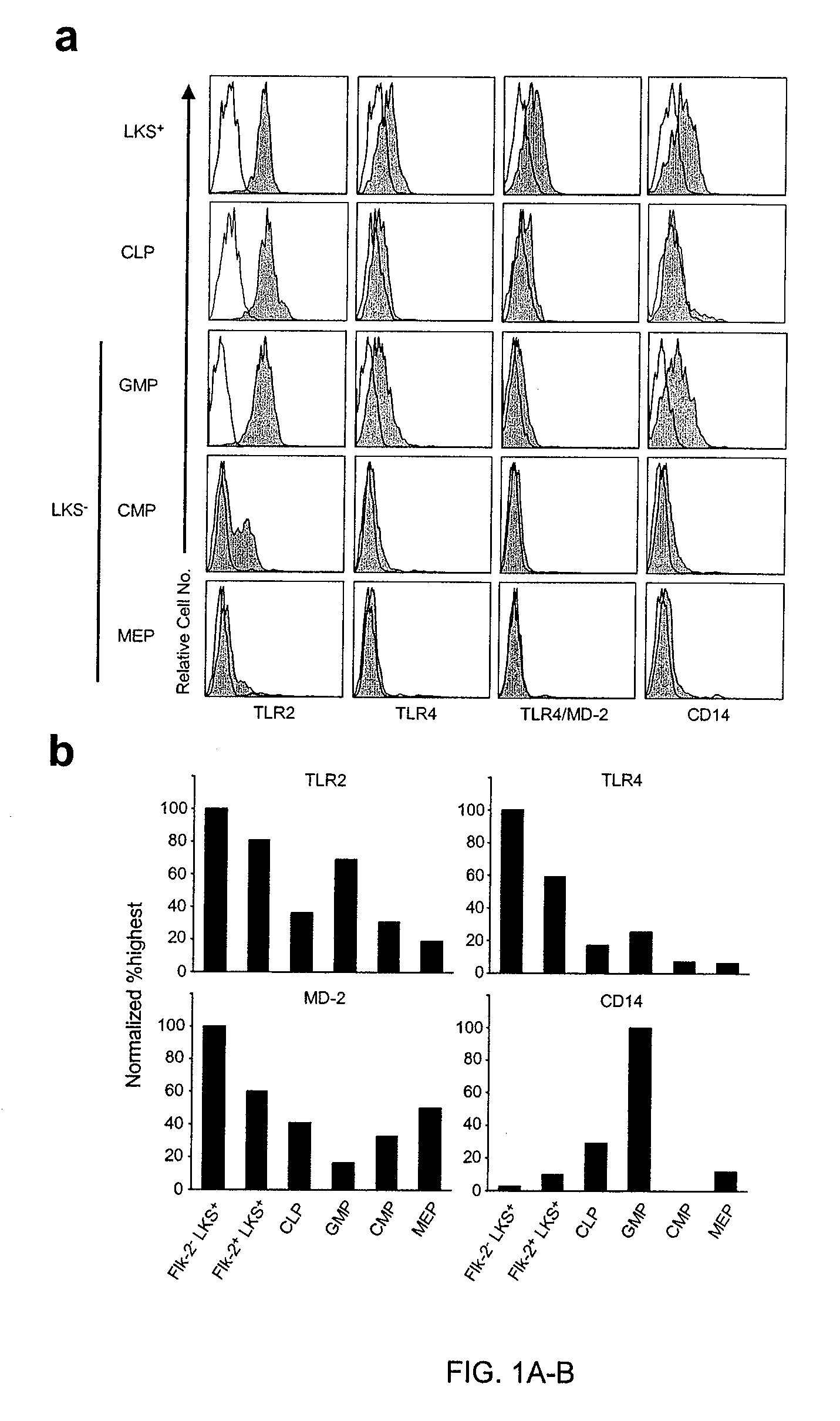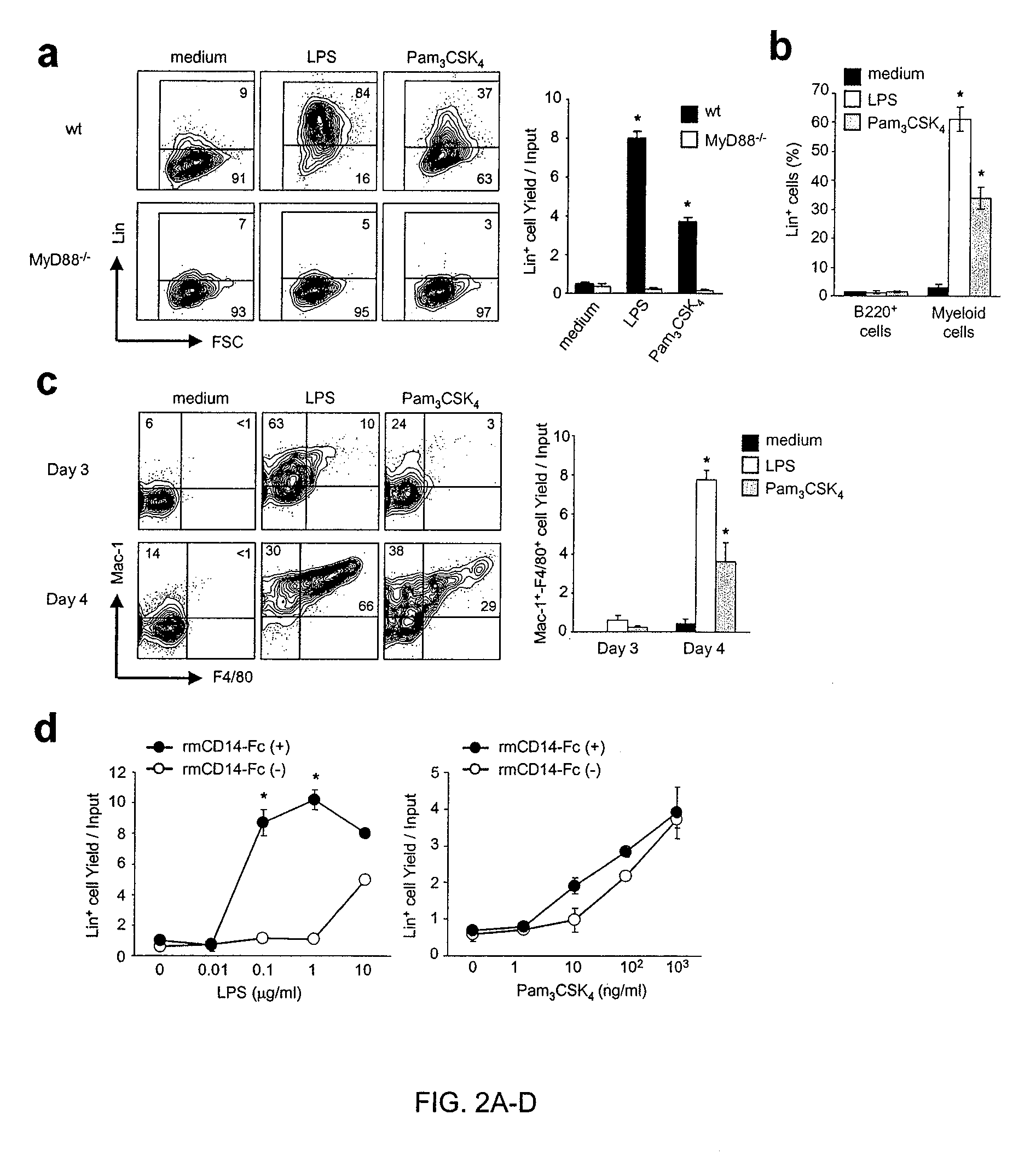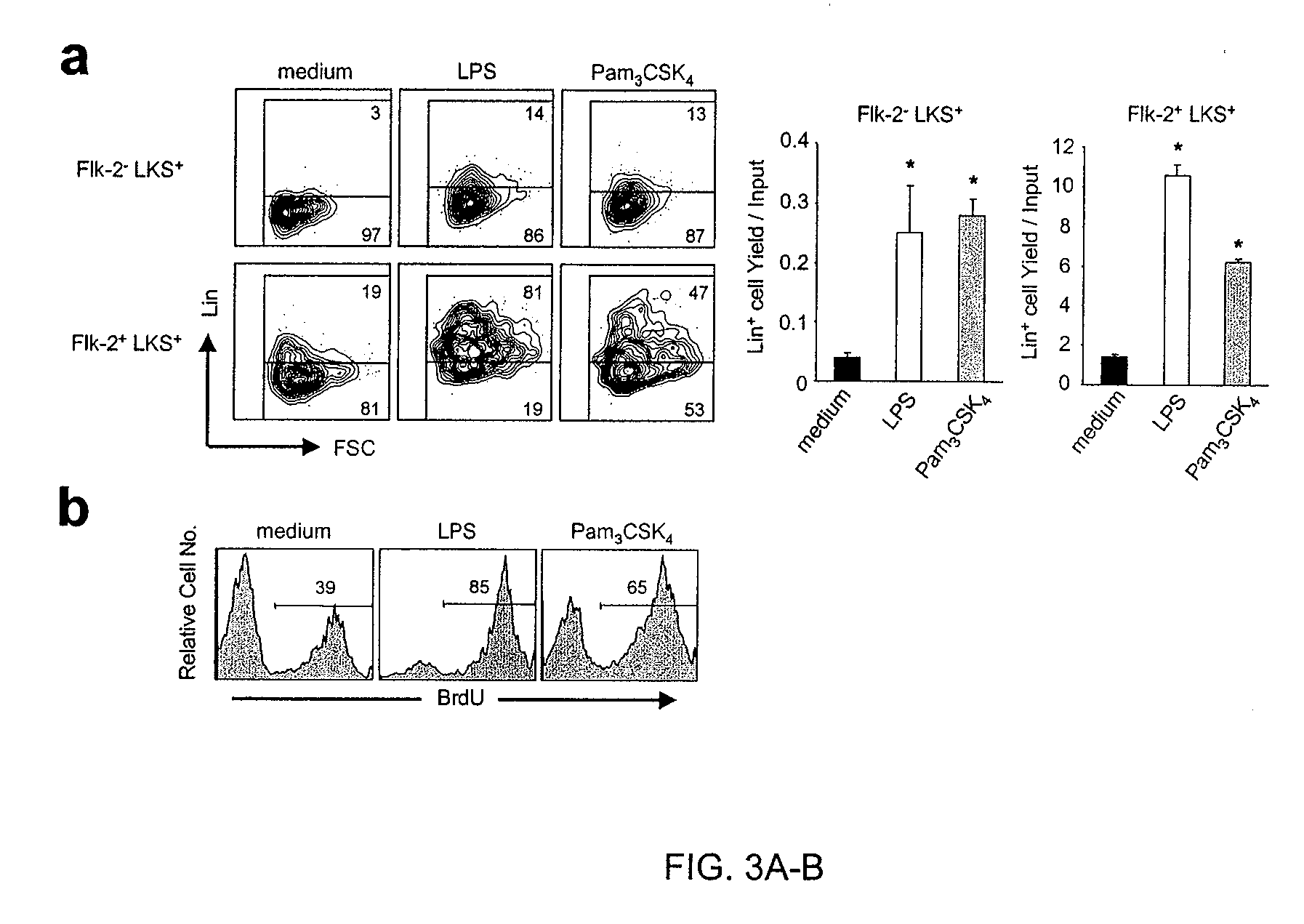Regulation of toll-like receptors on stem cells
a technology of toll-like receptors and stem cells, applied in the field of cell biology, developmental biology and immunology, to achieve the effect of increasing the efficiency of lymphoid cell engraftmen
- Summary
- Abstract
- Description
- Claims
- Application Information
AI Technical Summary
Benefits of technology
Problems solved by technology
Method used
Image
Examples
example 1
Materials & Methods
[0194]Mice. C57BL / 6 and MyD88− / − mice were used at 8-10 weeks of age. C57BL / 6 mice were purchased from the Jackson Laboratory (Bar Harbor, Me.). MyD88− / − mice were maintained in our laboratory animal resource facility (LARC) at the Oklahoma Medical Research Foundation.
[0195]Reagents. Recombinant mouse IL7, stem cell factor (SCF), Flt-3 ligand (FL), M-CSF, GM-CSF, recombinant mouse CD14 / Fc chimera protein, and recombinant human CD14 were purchased from R&D Systems (Minneapolis, Minn.). LPS from Escherichia coli 055:B5 was purchased from Sigma-Aldrich (St. Louis, Mo.). A synthetic lipopeptide Pam3CSK4 was purchased from InvivoGen (San Diego, Calif.).
[0196]Antibodies and flow cytometry. The following Abs for flow cytometry were purchased from eBioscience (San Diego, Calif.): biotinylated anti-TLR4 / MD-2 (clone MTS510), biotinylated anti-RP105 (clone RP / 14), biotinylated anti-MD-1 (clone MD113), biotinylated anti-CD14 (clone Sa2-8), PE-conjugated anti-CD62L (clone MEL-...
example 2
Results
[0208]Toll-like receptors and associated molecules are expressed on stem cells and early hematopoietic progenitors. The main aims of this study were to determine if TLRs are expressed on hematopoietic cells and whether they have a developmental role in bone marrow. Therefore, the inventors traced the expression of TLRs and their co-receptors on bone marrow cells by flow cytometry and were fortunate to have a new TLR4 specific monoclonal antibody (see Example 1). An initial finding was that lineage marker negative (Lin−), as well as Lin+ cells expressed TLR2 and TLR4 as well as MD-2 and CD14 (FIG. 9A). HSC and early progenitors are enriched in a Lin− c-Kit+ subset. These primitive cells displayed significant amounts of TLRs and co-receptor components (FIG. 9A).
[0209]Next, the inventors divided Lin− c-Kit+ cells into five major subsets and evaluated them by flow cytometry (FIG. 1A). The HSC enriched Lin− IL-7Rα− c-Kithi Sca-1+ (LKS+) fraction had uniformly high levels of TLR2, ...
example 3
Discussion
[0233]Blood cell formation has traditionally been depicted as a series of branching steps, through which hematopoietic stems cells (HSCs) and their progeny sequentially lose differentiation options. However, it is now clear that this is a gradual process and progenitors in route to becoming one cell type retain other potential that can be revealed under particular circumstances. There are numerous examples where lymphoid lineage cells can be experimentally converted to macrophages (Kondo et al., 2000; Iwasaki-Arai et al., 2003; Xie et al., 2004). Until now, however, there has been no physiological basis for this phenomenon. In that context, it is interesting that plasmacytoid DCs can convert to myeloid DCs during viral infection (zuniga et al., 2004). A degree of lineage plasticity could provide a means to respond to microbial / viral products.
[0234]A key question is how TLR signals direct hematopoietic cells to a particular fate and obviate the need for normal environmental...
PUM
| Property | Measurement | Unit |
|---|---|---|
| concentrations | aaaaa | aaaaa |
| concentrations | aaaaa | aaaaa |
| time | aaaaa | aaaaa |
Abstract
Description
Claims
Application Information
 Login to View More
Login to View More - R&D
- Intellectual Property
- Life Sciences
- Materials
- Tech Scout
- Unparalleled Data Quality
- Higher Quality Content
- 60% Fewer Hallucinations
Browse by: Latest US Patents, China's latest patents, Technical Efficacy Thesaurus, Application Domain, Technology Topic, Popular Technical Reports.
© 2025 PatSnap. All rights reserved.Legal|Privacy policy|Modern Slavery Act Transparency Statement|Sitemap|About US| Contact US: help@patsnap.com



